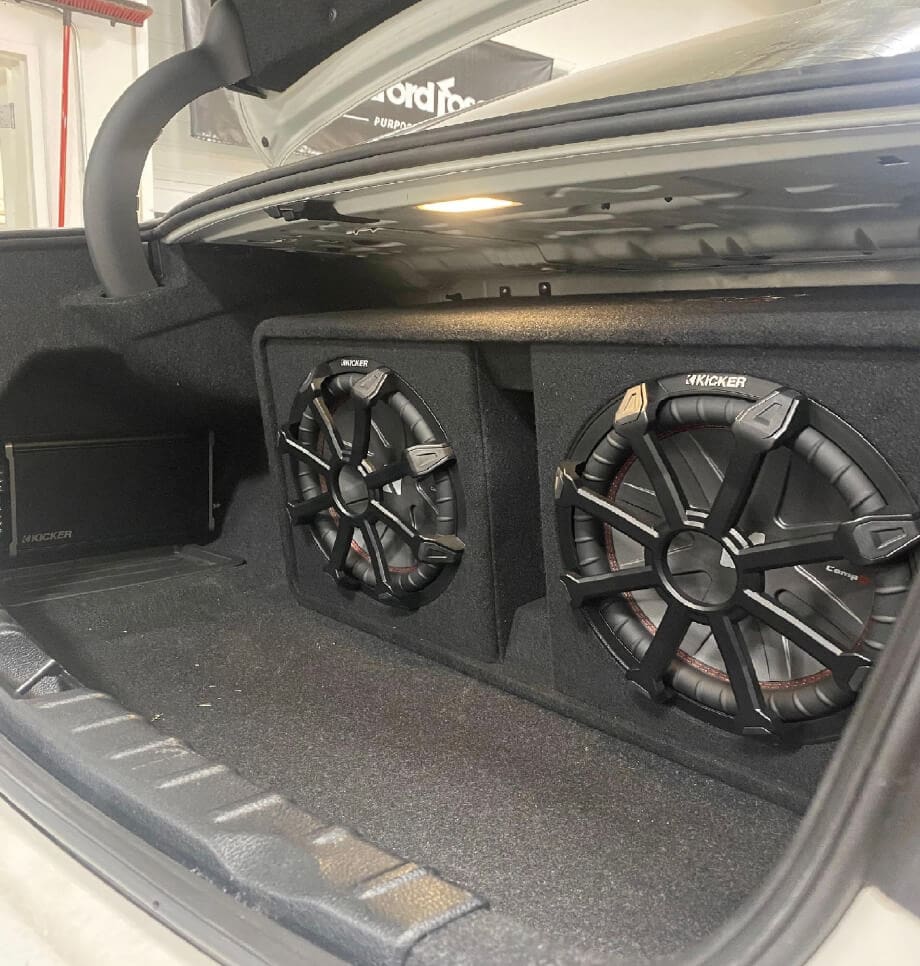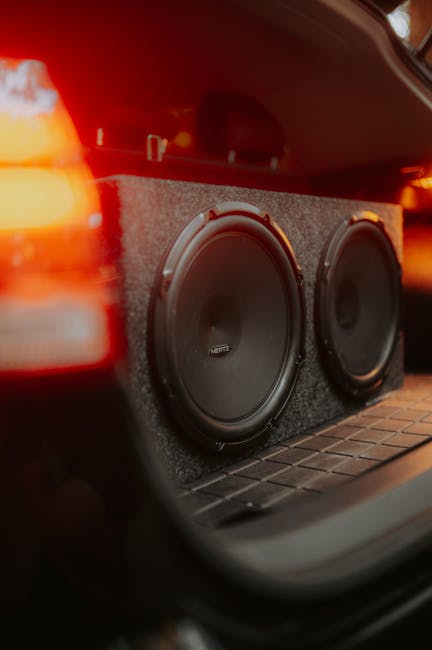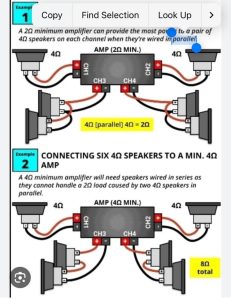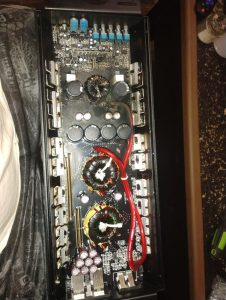Do you ever feel like your car’s music is missing something? That deep, powerful bass that makes every song come alive?
If your car speakers sound flat or weak, you’re not alone. Adding bass can completely change how you enjoy your favorite tunes while driving. In this guide, you’ll discover simple and effective ways to boost the bass in your car speakers without breaking the bank.
Ready to turn up the volume and feel the beat? Keep reading to learn how to get that rich, full sound you’ve been craving.

Credit: audiointensity.com
Choosing The Right Subwoofer
Choosing the right subwoofer is crucial to adding deep, powerful bass to your car speakers. The perfect subwoofer can transform your listening experience, but picking one without understanding your options could lead to disappointment. Let’s break down what you need to consider to make the best choice for your car audio setup.
Types Of Subwoofers
There are mainly two types of subwoofers: sealed and ported. Sealed subwoofers offer tight, accurate bass that’s great for genres like rock or jazz. Ported subwoofers deliver louder and deeper bass, perfect if you want that booming effect often found in hip-hop or electronic music.
Another option is the shallow-mount subwoofer, which fits in tight spaces but may sacrifice some bass depth. Think about where you can physically install the subwoofer and what sound style you prefer before deciding.
Size And Power Considerations
Subwoofers come in various sizes, typically ranging from 8 to 15 inches. Larger subwoofers produce deeper bass but need more power and space. Smaller ones fit better in compact cars but may not deliver the same low-end punch.
Power handling is just as important. Check the RMS power rating, which tells you how much continuous power the subwoofer can handle without damage. Matching the subwoofer’s power rating to your amplifier ensures clear, distortion-free bass.
Compatibility With Car Audio System
Your subwoofer must work smoothly with your existing car audio system. Check the impedance (measured in ohms) to match the subwoofer with your amplifier’s output. Mismatched impedance can cause poor performance or damage your gear.
Also, consider your car’s electrical system. High-powered subwoofers might demand more from your battery and alternator. Think about upgrading these components if you plan to install a powerful subwoofer for the best performance.

Credit: www.youtube.com
Selecting An Amplifier
Selecting the right amplifier is key to boosting bass in your car speakers. It controls the power sent to the subwoofer and affects sound quality. Picking the correct amplifier ensures your bass sounds deep and clear. This section explains how to choose an amplifier that fits your setup and needs.
Matching Amplifier Power To Subwoofer
Choose an amplifier with power output close to your subwoofer’s rating. Too little power causes weak bass and distortion. Too much power risks damaging the subwoofer. Check the RMS (continuous power) rating of both devices. Match them to avoid underpowering or overpowering your system. Look for an amplifier that can deliver steady power at your subwoofer’s impedance.
Mono Vs Multi-channel Amplifiers
Mono amplifiers power only one channel, perfect for a single subwoofer. They provide strong, clean bass output. Multi-channel amplifiers power multiple speakers or subwoofers. They offer flexibility for a full sound system. Choose a mono amp if you want simple bass power. Pick a multi-channel amp to run several speakers, including subs, with one device.
Installation And Placement Tips
- Place the amplifier in a cool, dry spot to avoid overheating.
- Secure the amplifier firmly to prevent vibrations and noise.
- Keep amplifier wiring away from power cables to reduce interference.
- Use proper gauge wires for power and speaker connections.
- Ensure good ventilation around the amplifier for better performance.
Wiring And Connections
Wiring and connections are the backbone of adding bass to car speakers. Proper wiring ensures the subwoofer and amplifier work together smoothly. Poor connections cause weak bass or no sound at all. Follow these wiring steps to improve bass output effectively.
Running Power And Ground Wires
Power wires carry electricity from the battery to the amplifier. Use a thick wire, usually 8 or 4 gauge, for strong power flow. Connect the power wire directly to the positive battery terminal. Add a fuse close to the battery to protect the system.
Ground wires complete the electrical circuit by linking the amplifier to the car’s metal frame. Choose a clean, bare metal surface for the ground connection. Keep the ground wire as short as possible to avoid interference.
Connecting Rca Cables
RCA cables send audio signals from the head unit to the amplifier. Use high-quality shielded RCA cables to reduce noise and signal loss. Run the RCA cables away from power wires to avoid hum or static sounds.
Connect the RCA cables to the correct input ports on the amplifier. Secure connections prevent signal drops and ensure clear bass output.
Speaker Wire Setup
Speaker wires transfer amplified audio signals to the subwoofer. Use speaker wires rated for car audio, typically 16 or 14 gauge. Connect wires firmly to both the amplifier output and subwoofer terminals.
Match the positive and negative terminals correctly to avoid phase issues. Incorrect wiring can reduce bass quality or cause speaker damage.
Adjusting Audio Settings
Adjusting audio settings is key to improving bass performance in car speakers. Fine-tuning these settings helps deliver deep, clear bass without distortion. It also ensures the bass blends well with other sounds in the car. Proper adjustment creates a balanced and enjoyable listening experience.
Setting Crossover Frequencies
The crossover frequency decides which sounds go to the subwoofer or the main speakers. Set it low enough to send only bass notes to the subwoofer. A typical range is between 60 Hz and 120 Hz. Adjusting this prevents overlap and keeps sound clear. Use your car stereo or amplifier settings to change crossover points.
Tuning Gain And Bass Boost
Gain controls the strength of the bass signal sent to the subwoofer. Set gain to a moderate level to avoid distortion or damage. Increase bass boost carefully to add extra punch. Too much boost can cause sound to become muddy or overpowering. Test different levels and listen closely for the best bass tone.
Balancing With Other Speakers
Balance bass with midrange and treble speakers for a full sound. Adjust speaker levels to keep bass from overwhelming other tones. Use your car stereo’s equalizer to fine-tune each frequency range. Proper balance makes music sound natural and rich inside your car. Experiment with settings until the sound feels right to your ears.
Improving Sound Quality
Improving sound quality is key to enjoying deeper bass in your car. Enhancing audio involves more than just adding a subwoofer. It requires attention to how sound behaves inside your vehicle. Small changes can make a big difference in clarity and richness. Focus on reducing vibrations, placing speakers well, and upgrading audio components for the best results.
Using Sound Deadening Materials
Sound deadening materials reduce vibrations and road noise. They stop sound waves from bouncing inside doors and panels. Use foam, mats, or butyl sheets on doors and floors. This creates a quieter cabin and clearer bass. It also helps your speakers perform better without distortion.
Optimizing Subwoofer Placement
Subwoofer placement affects bass strength and quality. Place the subwoofer near a corner or against a solid surface. This boosts low frequencies naturally. Avoid placing it where sound is blocked by seats or objects. Experiment with different spots to find the best bass response.
Upgrading Factory Head Units
Factory head units often lack power and features. Upgrading to an aftermarket head unit improves sound control. Look for units with built-in equalizers and preamp outputs. These allow better tuning of bass and overall sound balance. A quality head unit can drive your speakers more efficiently.

Credit: flynnaudio.com
Troubleshooting Common Issues
Troubleshooting is key to enjoy rich bass in your car speakers. Bass issues can ruin your music experience. Some problems are common and easy to fix. Knowing what to check saves time and effort. This section covers major bass issues and their fixes.
Eliminating Distortion And Rattling
Distortion and rattling often come from poor speaker installation. Loose parts vibrate with bass, causing noise. Tighten all screws and mounts firmly. Check speaker cones for damage or wear. Damaged cones distort sound and reduce bass quality.
Use foam or rubber gaskets to seal gaps. Gaps let air escape, causing rattles. Avoid pushing volume beyond speaker limits. High volume can cause distortion and damage. Proper speaker matching with your amplifier helps prevent distortion.
Fixing Ground Loop Noise
Ground loop noise sounds like a constant hum or buzz. It occurs when audio components have different grounding points. Check all audio cables for secure grounding. Use a ground loop isolator to break the loop. Connect all devices to the same power source. Avoid running audio cables near power lines to reduce interference.
Checking For Overheating
Overheating reduces speaker and amplifier performance. Feel the amp and speakers after use. If they are too hot, turn off the system. Ensure proper ventilation around the amplifier. Avoid placing amps in enclosed spaces without airflow. Use a cooling fan if needed. Overheating can cause sound cutouts or damage components.
Frequently Asked Questions
How Can I Improve Bass In My Car Speakers?
To improve bass, start by upgrading your car speakers. Consider adding a subwoofer for deeper bass frequencies. Adjust your car’s equalizer settings to boost the bass. Ensure your speakers are properly installed and the car’s acoustics are optimized by using sound-deadening materials.
Do I Need An Amplifier For Better Bass?
Yes, an amplifier can significantly enhance bass quality. It provides additional power to your speakers, improving sound clarity and depth. An amplifier can also help reduce distortion at higher volumes, ensuring cleaner bass output. Ensure the amplifier is compatible with your car’s audio system for optimal performance.
What Is The Role Of A Subwoofer In Bass?
A subwoofer is essential for producing deep bass sounds. It handles low-frequency audio signals that regular speakers can’t. By adding a subwoofer, you enhance the overall audio quality. It provides a richer, fuller sound experience by effectively reproducing bass notes, making your music more immersive.
How Do Speaker Settings Affect Bass?
Speaker settings significantly impact bass output. Adjusting the equalizer can enhance low frequencies. Ensure your speakers are set to “full range” if possible. Proper crossover settings can also improve bass response. Experiment with different settings to find the best balance for your car’s acoustics.
Conclusion
Adding bass to car speakers improves your music experience a lot. Choose the right subwoofer and amplifier for clear, strong sound. Proper installation helps avoid sound problems and saves your equipment. Adjust settings carefully to get the best bass without distortion.
Enjoy deep, rich beats every time you drive. Simple steps can make a big difference in sound quality. Start small, test often, and you will hear the change. Your car rides will feel more exciting and fun.



